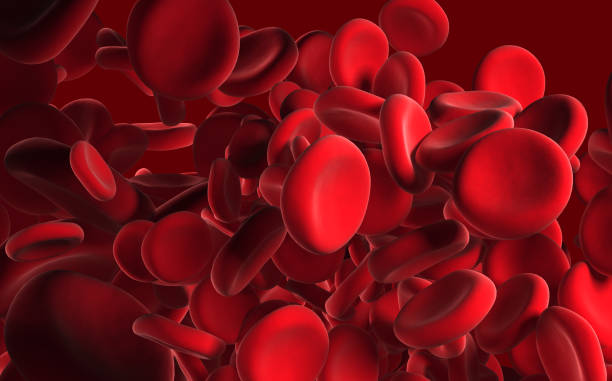When most people think about tracking their menstrual cycle, the conversation tends to stop at the period itself. How long it lasts, how heavy it is, whether it’s painful or irregular—that’s usually the extent of it. But your menstrual cycle is about far more than your period. It’s an intricate, hormonal symphony that touches every part of your health—from your mood and energy levels to your digestion, sleep, skin, and even brain function.
Your cycle is essentially a monthly report card from your body. When things are running smoothly, it’s a good sign that your hormones are in balance and your systems are in sync. But when things feel off—short cycles, missed periods, severe cramps, mood swings, or acne—your body might be trying to tell you something important. That’s why menstrual tracking isn’t just about reproduction or planning for pregnancy. It’s a tool for understanding your entire body.
Learning to track your cycle is like learning a new language—the language of your hormones. And once you start speaking it fluently, you can harness your cycle to feel better, perform better, and live more in tune with your body’s natural rhythm.
Understanding the Four Phases of Your Cycle
To track your cycle in a meaningful way, it’s helpful to understand what’s actually happening throughout the month. The menstrual cycle isn’t one flat line with a period tacked on. It’s a dynamic process divided into four main phases: menstrual, follicular, ovulatory, and luteal.
Each phase brings shifts in your hormone levels—primarily estrogen and progesterone—that influence everything from your emotions to your metabolism. During your period (the menstrual phase), both estrogen and progesterone are low. This is a natural time of rest and renewal, both physically and mentally. As your period ends and you enter the follicular phase, estrogen starts to rise, boosting energy, confidence, and mental clarity. You might feel more social, more motivated, and even more attractive. This phase culminates in ovulation, when one of your ovaries releases an egg. This is the peak of fertility and is often marked by a surge in libido and vitality.
After ovulation, progesterone takes center stage during the luteal phase. This hormone helps prepare your body for a possible pregnancy, but it also has a calming, grounding effect. You may feel more introspective or emotionally sensitive. If pregnancy doesn’t occur, both estrogen and progesterone drop, and your period begins again.
These hormonal shifts affect more than just your uterus. They touch your brain, your skin, your digestive tract, your immune system—even how you experience stress. That’s why tracking your cycle can give you such powerful insight into your health. You’re not the same every day of the month—and that’s not a flaw; it’s a feature.
What to Track and Why It Matters
Tracking your menstrual cycle can be as simple or as detailed as you want it to be. Some people just jot down the dates of their periods. Others go deep, monitoring basal body temperature, cervical mucus, mood swings, energy levels, sleep patterns, and cravings. The beauty of cycle tracking is that you can customize it to your goals—whether that’s improving hormonal balance, managing PMS, avoiding pregnancy, or optimizing workouts.
The most basic place to start is with your period itself. Record when it starts and ends, how heavy the flow is, and whether you experience any pain, clots, or irregularities. This foundational data helps establish your average cycle length and detect any irregular patterns over time. It can also alert you to potential problems, like abnormally heavy bleeding (which might suggest fibroids or a bleeding disorder) or frequent spotting (which could be linked to hormonal imbalance).
But don’t stop there. Pay attention to how you feel throughout the month. Are there days when you’re more anxious, irritable, or low-energy? Do you get headaches before your period? Do you sleep poorly right before menstruation or feel bloated during ovulation? These aren’t random occurrences—they’re hormonal footprints, and tracking them can help you connect the dots.
Even physical signs like breast tenderness, changes in skin texture, or digestive issues can be linked to specific points in your cycle. For example, estrogen tends to boost collagen production and skin elasticity, which is why many people find their skin looks its best around ovulation. On the flip side, progesterone can increase oil production, leading to breakouts in the luteal phase. Understanding these patterns helps you work with your body instead of feeling like a prisoner to its whims.
Choosing a Tracking Method That Works for You
Thanks to technology, there are now countless ways to track your cycle. You can go old-school with a paper journal or calendar, or you can download an app that uses algorithms and data analysis to predict ovulation and alert you to hormonal shifts.
Apps like Clue, Flo, and Natural Cycles offer user-friendly interfaces and allow you to log dozens of data points—from mood and pain levels to temperature and cervical fluid. Some even sync with wearable tech or use fertility awareness methods to help with birth control or conception. Others take a more holistic approach, integrating cycle tracking with nutrition, fitness, and mindfulness practices.
If you’re interested in fertility tracking or natural birth control, you might explore methods like the Symptothermal Method, which combines tracking of basal body temperature (your body’s lowest resting temp) and cervical mucus. This can be a highly effective way to pinpoint ovulation, but it does require consistency and education.
Whatever method you choose, the key is consistency. Even if you’re only tracking a few things, doing it regularly helps paint a clearer picture over time. And remember, tracking doesn’t have to be a burden. It can be a form of self-care—a daily check-in that helps you listen to your body and respond with intention.
How Tracking Can Help With Hormonal Imbalance
Many people experience symptoms of hormonal imbalance without realizing it—irregular cycles, heavy bleeding, extreme mood swings, chronic fatigue, and more. Often, these symptoms are dismissed or normalized, especially in cultures where women are taught to “push through” discomfort or treat period pain as a fact of life.
But your cycle can be one of the earliest indicators that something is off internally. If your periods are consistently irregular or disappear altogether, it might suggest conditions like PCOS, hypothalamic amenorrhea, or thyroid dysfunction. If your luteal phase is too short, it could affect fertility. If you have debilitating PMS or PMDD (premenstrual dysphoric disorder), it’s a sign that your body is struggling to maintain hormonal equilibrium.
By tracking your symptoms over time, you can bring hard data to your healthcare provider and advocate more effectively for your health. Instead of saying, “I think I get bad cramps sometimes,” you can say, “I’ve been tracking for three months and notice that my cramps are severe for two days before my period every cycle, accompanied by nausea and fatigue.” That kind of clarity empowers you and helps your provider make a more accurate diagnosis.
Tracking also allows you to test and tweak lifestyle changes. If you start a new supplement or change your diet, you can track how it affects your cycle. Do you feel better? Are your periods more regular? Is your PMS less intense? Instead of guessing, you’re experimenting—and using your body’s feedback to guide your choices.
Syncing Your Life with Your Cycle
One of the most empowering aspects of menstrual tracking is the ability to align your life with your hormonal rhythms. This practice—often called cycle syncing—recognizes that your energy, motivation, creativity, and resilience vary across your cycle. Instead of expecting yourself to perform the same way every day, you can plan tasks, workouts, and self-care in harmony with your biology.
During the follicular phase, rising estrogen makes this a great time for brainstorming, starting new projects, and engaging in high-intensity workouts. Ovulation brings peak confidence and sociability—ideal for networking, public speaking, or important meetings. As you move into the luteal phase, your focus may shift inward. This can be a good time for detailed work, organizing, or reflection. Menstruation is the body’s natural reset—perfect for rest, journaling, and reassessing priorities.
Cycle syncing isn’t about limiting yourself. It’s about optimizing. It’s about knowing when to push and when to pause, when to speak up and when to reflect. Over time, this practice can reduce burnout, improve productivity, and foster a more compassionate relationship with your body.
Tracking Through Different Life Stages
Your menstrual cycle evolves over the course of your life. In your teens, cycles may be irregular as your body matures. In your 20s and 30s, cycles often stabilize, though factors like stress, travel, and contraception can still cause fluctuations. In your 40s, perimenopause begins—a transitional phase leading up to menopause—and your cycles may become unpredictable again.
Tracking your cycle through these life stages can help you notice trends and prepare for changes. For teens, it builds body literacy and confidence. For those considering pregnancy, it can aid conception or serve as a natural method of contraception. For those in perimenopause, it can help you understand the hormonal turbulence that comes with fluctuating estrogen and progesterone.
Even after menopause, many people choose to track how they feel on a monthly basis. While the menstrual cycle technically ends, hormonal fluctuations continue, especially if hormone replacement therapy is involved. The practice of tuning into your body doesn’t stop with your period—it evolves.
Using Cycle Tracking to Inform Your Healthcare
Perhaps one of the most underrated benefits of menstrual tracking is how much it enhances your relationship with your healthcare providers. Armed with months of detailed information, you’re not relying on vague recollections or incomplete symptom lists. You have a record—a story—that your doctor can analyze and use to guide treatment.
This can be especially helpful if you’re dealing with chronic conditions like endometriosis, PCOS, thyroid issues, or mood disorders that fluctuate with your cycle. It’s also useful when evaluating how medications, supplements, or lifestyle changes are working. Instead of waiting months to recognize a pattern, your tracker shows it in real time.
Some doctors now encourage patients to bring their cycle tracking data to appointments, and some apps even offer printable summaries or charts. It’s a way to co-create your healthcare—not as a passive recipient, but as an informed, empowered partner.
Reconnecting with the Rhythms of Your Body
In a world that often demands linear productivity and constant output, the menstrual cycle reminds us that we are cyclical beings. Our energy waxes and wanes. Our needs change. Our bodies speak in whispers, nudges, and patterns.
Tracking your menstrual cycle isn’t just a medical tool—it’s a radical act of self-awareness. It invites you to slow down and listen, to honor your body’s signals instead of overriding them. It builds trust between you and your body. And it reminds you that you are not broken or inconsistent—you are dynamic, powerful, and designed to live in rhythm.
For too long, menstruation has been shrouded in silence or shame. But the tide is changing. More people are talking openly about their cycles, embracing them as vital signs, and using them to enhance health, performance, and well-being. By tracking your cycle, you’re joining a quiet revolution—one that says your body is worth understanding, and your health is worth prioritizing.






